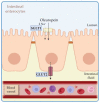Role of Hydroxytyrosol and Oleuropein in the Prevention of Aging and Related Disorders: Focus on Neurodegeneration, Skeletal Muscle Dysfunction and Gut Microbiota
- PMID: 37049607
- PMCID: PMC10096778
- DOI: 10.3390/nu15071767
Role of Hydroxytyrosol and Oleuropein in the Prevention of Aging and Related Disorders: Focus on Neurodegeneration, Skeletal Muscle Dysfunction and Gut Microbiota
Abstract
Aging is a multi-faceted process caused by the accumulation of cellular damage over time, associated with a gradual reduction of physiological activities in cells and organs. This degeneration results in a reduced ability to adapt to homeostasis perturbations and an increased incidence of illnesses such as cognitive decline, neurodegenerative and cardiovascular diseases, cancer, diabetes, and skeletal muscle pathologies. Key features of aging include a chronic low-grade inflammation state and a decrease of the autophagic process. The Mediterranean diet has been associated with longevity and ability to counteract the onset of age-related disorders. Extra virgin olive oil, a fundamental component of this diet, contains bioactive polyphenolic compounds as hydroxytyrosol (HTyr) and oleuropein (OLE), known for their antioxidant, anti-inflammatory, and neuroprotective properties. This review is focused on brain, skeletal muscle, and gut microbiota, as these systems are known to interact at several levels. After the description of the chemistry and pharmacokinetics of HTyr and OLE, we summarize studies reporting their effects in in vivo and in vitro models of neurodegenerative diseases of the central/peripheral nervous system, adult neurogenesis and depression, senescence and lifespan, and age-related skeletal muscle disorders, as well as their impact on the composition of the gut microbiota.
Keywords: aging; brain neurodegeneration; gut–brain axis and microbiota; hydroxytyrosol and oleuropein chemistry; metabolism; muscle dysfunctions; neuroprotection; pharmacokinetics; senescence.
Conflict of interest statement
The authors declare no conflict of interest.
Figures







References
-
- Calabrese V., Santoro A., Monti D., Crupi R., di Paola R., Latteri S., Cuzzocrea S., Zappia M., Giordano J., Calabrese E.J., et al. Aging and Parkinson’s Disease: Inflammaging, neuroinflammation and biological remodeling as key factors in pathogenesis. Free Radic. Biol. Med. 2018;115:80–91. doi: 10.1016/j.freeradbiomed.2017.10.379. - DOI - PubMed
-
- Franceschi C., Capri M., Monti D., Giunta S., Olivieri F., Sevini F., Panourgia M.P., Invidia L., Celani L., Scurti M., et al. Inflammaging and anti-inflammaging: A systemic perspective on aging and longevity emerged from studies in humans. Mech. Ageing Dev. 2007;128:92–105. doi: 10.1016/j.mad.2006.11.016. - DOI - PubMed
-
- Bonafè M., Olivieri F., Cavallone L., Giovagnetti S., Mayegiani F., Cardelli M., Pieri C., Marra M., Antonicelli R., Lisa R., et al. A gender–dependent genetic predisposition to produce high levels of IL-6 is detrimental for longevity. Eur. J. Immunol. 2001;31:2357–2361. doi: 10.1002/1521-4141(200108)31:8<2357::AID-IMMU2357>3.0.CO;2-X. - DOI - PubMed
Publication types
MeSH terms
Substances
Grants and funding
LinkOut - more resources
Full Text Sources

